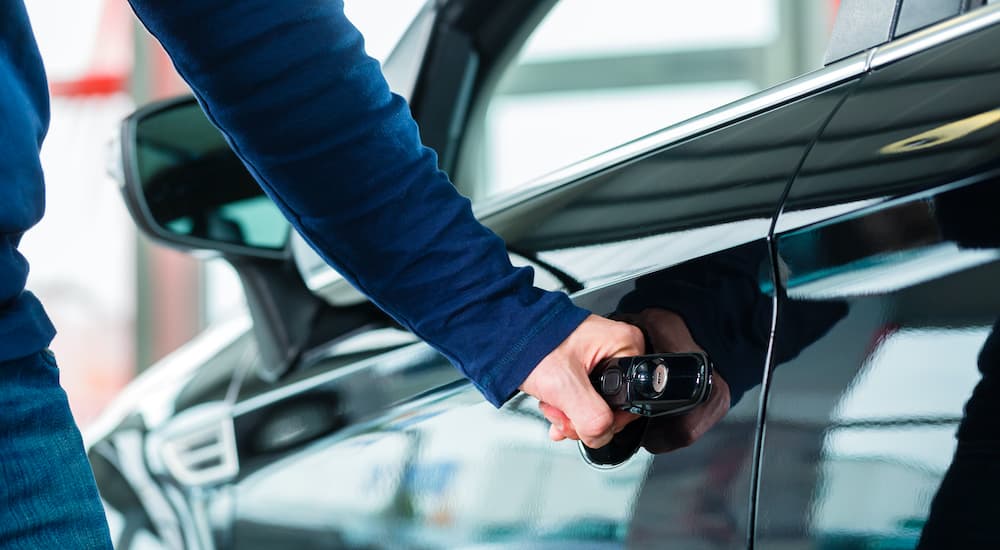While you may be contemplating the decision and searching around for used cars for sale, not every dealership is keen on providing potential car shoppers with honest answers about used vehicles. In fact, many dealerships take poor-quality trade-ins and mark them up higher than what they’re worth. Fortunately, there are a lot of good used car dealerships out there, and we’ve got some signs you need to look for when choosing the perfect used car dealership.
CARFAX Reports
There’s genuinely no good reason why a used vehicle should not include a complimentary CARFAX report. While you can always purchase a CARFAX report for yourself, a dealership’s reluctance to give you one for free is a bad sign. They may be trying to hide information about that model that can affect your decision to buy it or information that proves they’re overcharging you. When there’s no complimentary CARFAX report available, just take that as a sign that this is not the vehicle for you.
Warranties and Coverage
Car buyers often make the mistake of assuming that used vehicles don’t need to come with warranties. That’s simply not the case. When you purchase a Certified Pre-Owned model (CPO), you automatically get a factory warranty with that model. However, even many regular used models include mechanical warranties when you buy from a reputable dealership. If your used model doesn’t include any warranty options, especially if it’s a newer used model, continue your shopping spree elsewhere.

GAP Coverage
This is yet another feature that is often cast aside by used dealerships. In fact, even many newer dealerships may fail to mention GAP coverage to their buyers. This is not a good sign because GAP coverage is extremely important, especially for people with low credit or who are working to establish their credit. When you have a high interest rate on your vehicle loan, GAP coverage is a must, and here’s why.
If you get into an auto accident while you are still paying off your loan, your vehicle has been depreciating that entire time you’ve been making payments. When your interest rate is high, your payments will not always keep up with your vehicle’s worth. While you may have paid $10,000 off on your vehicle, your interest rate is taking up a good portion of that payment, and your vehicle’s value may have decreased even more than $10,000. This leads to what we call a “gap” in your coverage. Even if you’ve got full coverage insurance on your vehicle, you may end up owing thousands of dollars if that vehicle gets totaled.
GAP insurance covers that extra cost and keeps you protected when you are upside down on your loan. It’s also easy to pay for GAP insurance because most dealerships just factor it into your loan, or you can pay a flat rate upfront. No matter which route you go, you’re paying far less for your GAP insurance than you would if your vehicle gets totaled.
A Good Return Policy
Let’s face it. There’s no way you can possibly know every little in and out of a vehicle after giving it a short test drive. Sometimes, drivers purchase a vehicle, but three or four days later realize that it’s not exactly what they expected. Further, some red flag issues may pop up that make them regret their decision. This is why you want to find a dealership that offers a reliable return policy. Some dealerships include a 10-day or 1,000-mile warranty that allows you to return the vehicle for free within that period. You can even find dealerships that will pick the model up from your home or workplace for free. While this seems difficult to believe, it is definitely possible. Set your standards high and search for dealerships that offer a policy similar to this.
Reasonable Trade-In Values
Obviously, when you trade a vehicle in at a dealership, you likely won’t receive as much money as you could selling it outright. But most people do not want to deal with the hassle of selling their vehicle on their own. Plus, when you trade it in at a dealership, you’re saving lots of time and potential legal issues because they’re taking care of all the complex paperwork for you. While you can’t expect the highest offer from a dealer, you also want to make sure they’re not lowballing you.
When you go to trade in a model, make sure to check your vehicle’s worth through Kelley Blue Book so that you have an idea of what the dealership should be offering you. Also, don’t be shy about comparing and contrasting options. You’ll quickly find that some dealerships offer you far less for your used model than they should.
Even if you’re a first-time car buyer, this is important to look into. You’ll eventually need to trade your model in as well. It’s easier to stick with the same dealership rather than bouncing from one to another, so make sure the dealer you’re buying from offers reasonable trade-in prices. Their trade-in values are also a good indicator as to whether or not they’re giving you a good price for the model you’re looking to buy.

Financial Flexibility
Just because you’re on a budget doesn’t mean you should have to settle for a vehicle you don’t want. Many reliable dealerships will offer what is referred to as a “bad credit car loan.” This means that if you have poor credit or even no credit at all, you can still get financing for the vehicle you want. You don’t have to settle for a two-decade-old junker just because you have low credit.
In addition to this, many dealerships can also work it out to where your down payment is incredibly small. Some dealers even make it to where you don’t have to pay a single dime down. Typically, though, you can get a downpayment that’s as low as $1,000 with these flexible dealers. Once you consistently make your payments on time, this loan can be your route to establishing good credit. So, when it’s time to purchase another vehicle in the future, you’ll be able to get those low-interest rates and move up to an even fancier model.
Lease Availability
Another great option when you’re looking for used cars on a budget is leasing. While we typically think of leases as new models, a good dealership will allow drivers to lease used models as well. This can really save you money since lease costs are much lower than purchases. Plus, leases are made to be returned, so this is a great way to build your credit and work your way up to your dream ride.
Now You’re Ready to Go Car Shopping!
Now that you’ve got all these tips and tricks in your arsenal, you’re ready to face the automotive world with confidence. When you visit a dealership, be sure to watch for these signs. But most importantly, don’t be shy! Ask questions! If the information isn’t already supplied, make sure to mention CARFAX reports, return policies, GAP insurance, and the likes.
When you want to save even more time, look up the dealership online first to see if they have a website. If they do, scan the site for important information like we discussed today. Just remember that it’s possible to get a reliable vehicle that you love, even when you’re new to the car-buying game. Don’t settle for less than you deserve.



